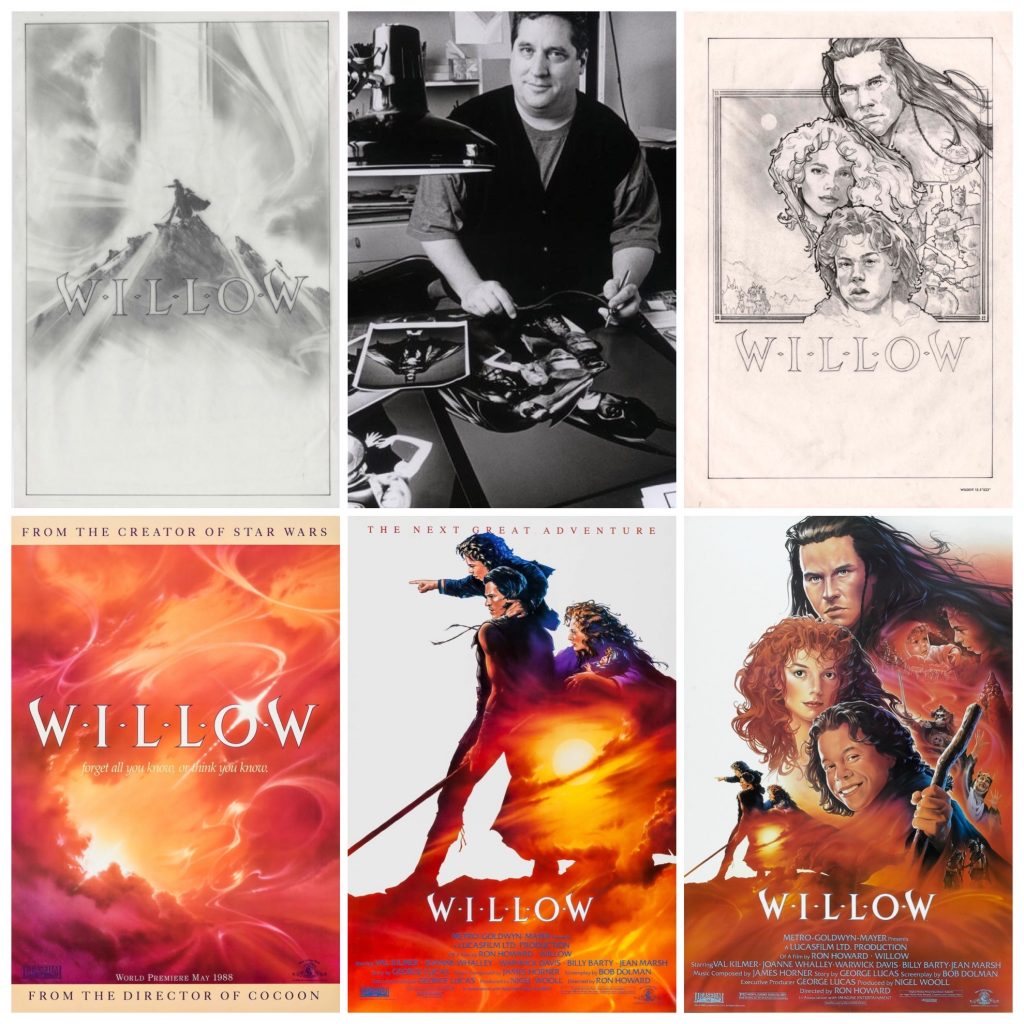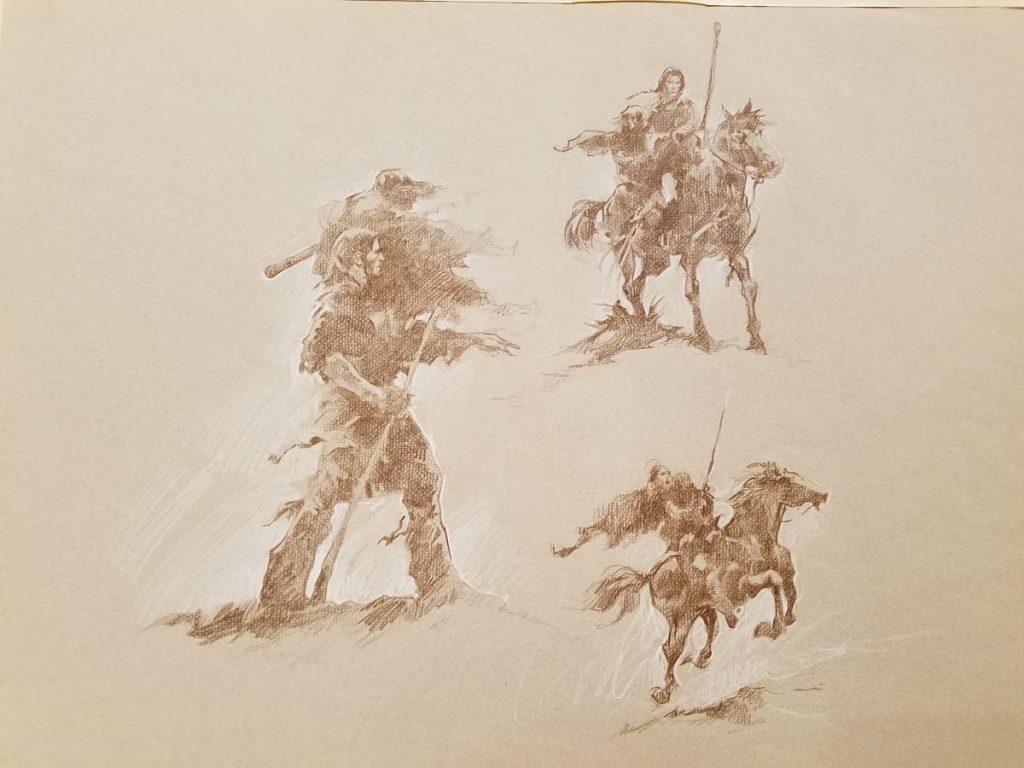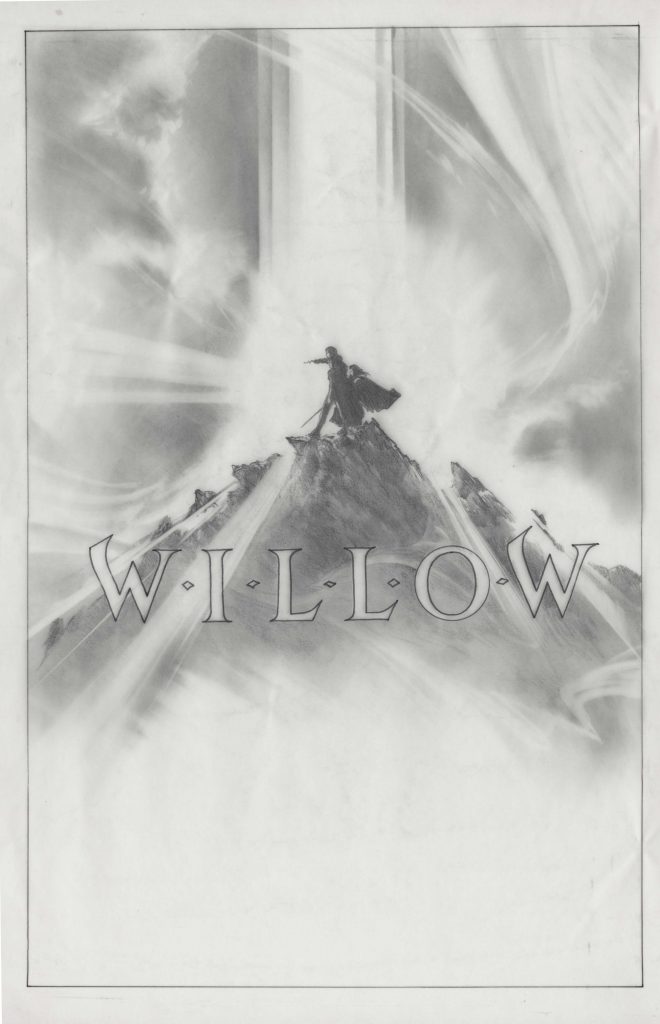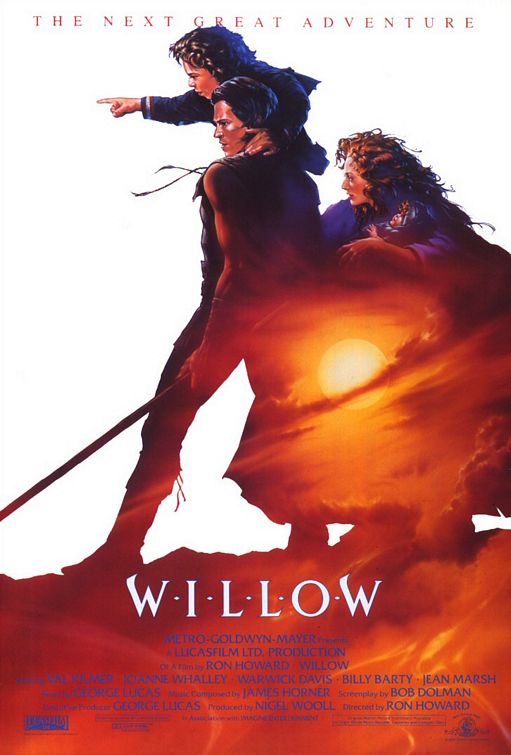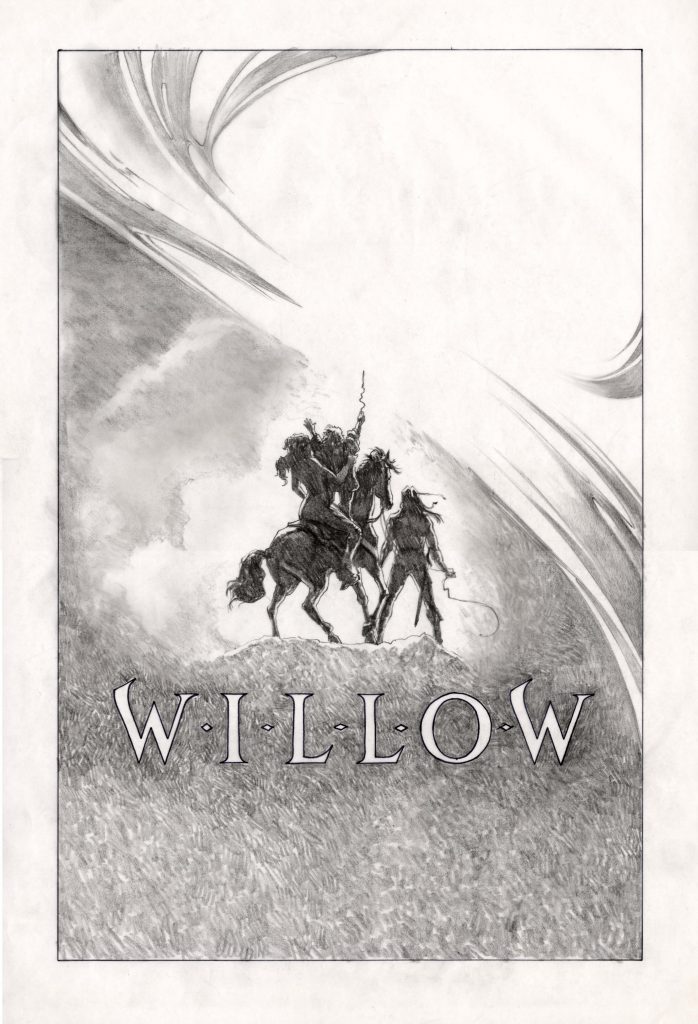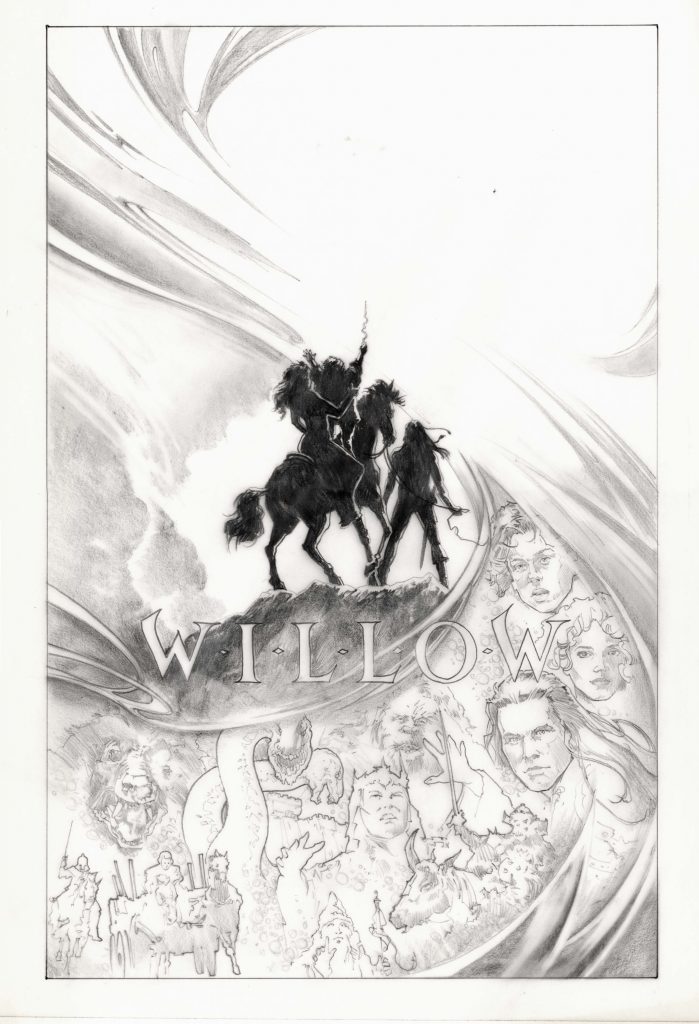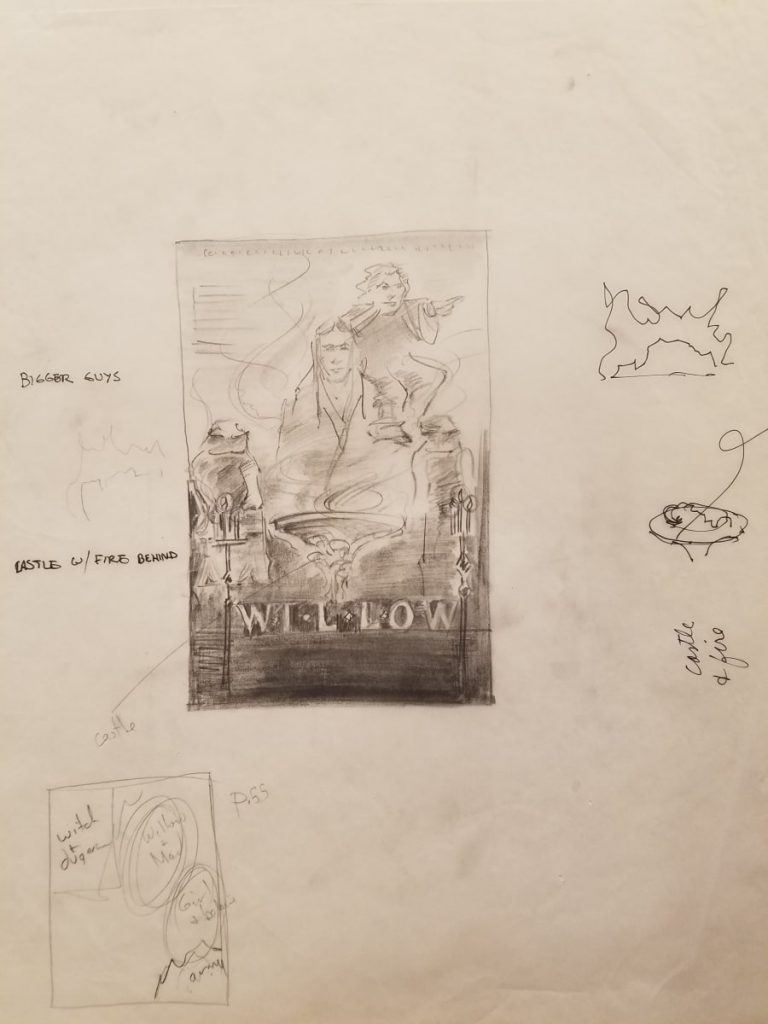With the exciting news that a Willow tv show is officially happening at the Disney+ streaming service, and starting production next year, I thought it might be a great time to look back on the beautiful illustration art created for the original John Alvin Willow posters. The art represents many different aspects of what made John Alvin one of the greatest as well as one of the most singular movie poster artists in history. In this blog, I’m going to show a number of John Alvin’s art created for the Willow movie campaign, some of which have never been published before.
First, a bit of information on the new show. Ron Howard, director of the original film, is executive producing. The only official star of the film is Willow is Warwick Davis, reprising his role as Willow Ufgood. It will introduce all-new characters to the world of enchantment that features fairy queens and two-headed Eborsisk monsters. Says Davis, “So many fans have asked me over the years if Willow will make a return, and now I’m thrilled to tell them that he will indeed. Many have told me they grew up with ‘Willow’ and that the film has influenced how they view heroism in our own world. If Willow Ufgood can represent the heroic potential in all of us, then he is a character I am extremely honored to reprise.”
Jonathan Kasdan and Wendy Mericle are executive producing, with Kasdan writing the pilot. Also getting an E.P credit is director Jon M. Chu (of Crazy Rich Asians fame) who will be directing the pilot. “Growing up in the ’80s, Willow has had a profound effect on me,” said Chu. “The story of the bravest heroes in the least likely places allowed me, an Asian-American kid growing up in a Chinese restaurant looking to go to Hollywood, to believe in the power of our own will, determination and of course, inner magic. So the fact that I get to work with my heroes from Kathleen Kennedy to Ron Howard is bigger than a dream-come-true. It’s a bucket-list moment for me. Jon Kasdan and Wendy Mericle have added such groundbreaking new characters and delightful surprises to this timeless story that I can’t wait for the world to come along on this epic journey with us.”
The original Willow film was released in 1988, and though it wasn’t an immediate triumph at the box office, it became a huge cult classic, leading to the creation of a board game and a number of computer games.
John Alvin was brought in quite early in the 88 production, and in those days, John, who was already storied for creating the E.T., Blade Runner, and Cocoon posters, had a lot of interaction with both Ron Howard and producer George Lucas. The Alvin key art for the Cocoon movie poster is a perfect example of that “Alvin-izing” that drew fans to films with ‘the promise of a great experience’.

John started working before he had seen any final movie images. Some of his earliest designs for the film were extensive sketches that intentionally called to mind the art of Frank Frazetta. Those were drawn on grey Canson paster paper and have a beautiful classical quality. Some of the original poses of the lead characters found their way into the finished posters.
John Alvin did three movie posters for Willow, which in itself is a rarity. He was one movie poster artist that would get the entire campaign to work on, from start to finish, including the teaser poster, and all other marketing designs, including images for buses, and other ancillary locations.

For Willow, his first image was the teaser, and really leveraged his ‘Alvin-izing’ to full effect. It was released 9 months before the film’s release, and just created a magical quality to pique interest in seeing more. Swirling clouds of orange and yellow are lit by the sun and magical light, and said “forget what you know or what you think you know”. This poster represents another aspect of John’s unique abilities, and that is his ability to create logo treatments. John Alvin loved creating his own typography or logo designs, as he did for E.T., and a number of other films. Willow is another example of that. Most movie poster artists stick to painting, often from other people’s ideas, but John would often come up with the idea, the composition, the painting itself, and the logo treatment. It’s what makes John Alvin so unusual and important to the history of film art.
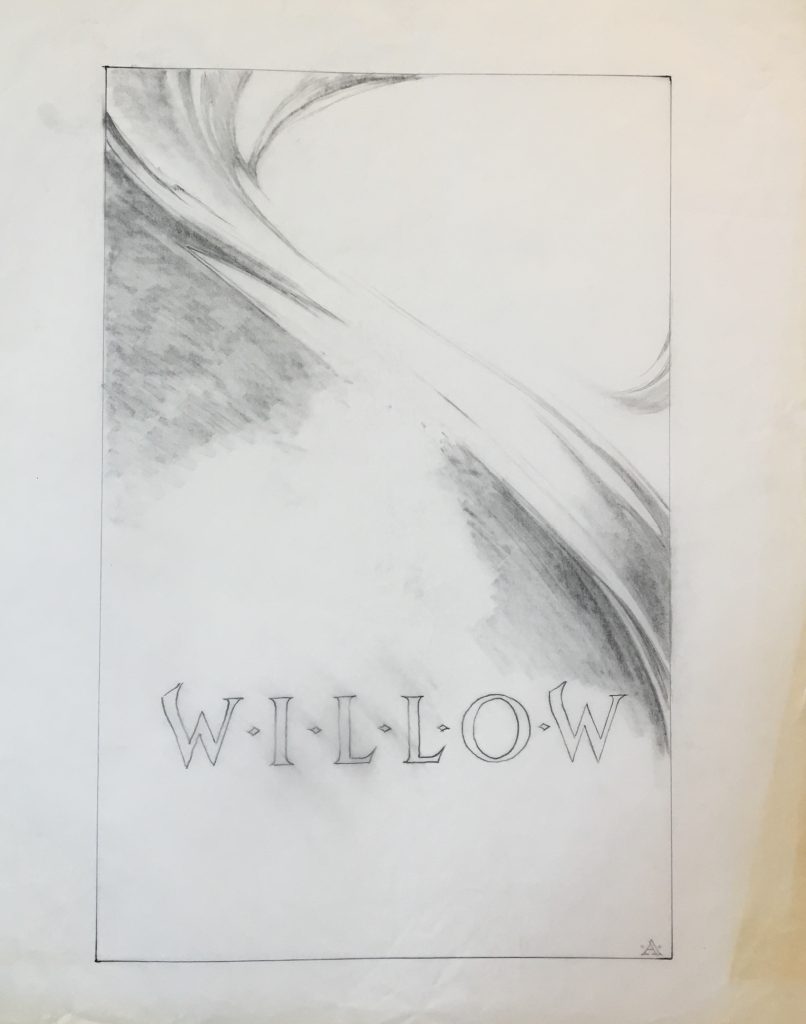

His second poster was one that blended the iconic design style he was known for (again, the ‘Alvin-izing’) and told more about the film by presenting the characters. It had all the magic of the teaser image, but also celebrated the archetypal imagery reminiscent of Joseph Campbell’s ‘A Hero’s Journey’. And why not? George Lucas was involved, after all.
It still wasn’t the ‘kitchen sink’ design style represented in the best known one-sheet he did with all the faces of the characters. In the book The Art of John Alvin, Andrea Alvin called the second poster ‘The Journey Image’, which was compiled from various production shots he got as inspiration. It’s interesting the number of designs he came up with that could have been the one-sheet, some of which I think are more inspiring and visually compelling than what they ultimately chose.
The final one-sheet again incorporated elements from both the first and second poster, while also showing the lead actors in close-up. What I’ve mentioned as ‘kitchen sink’ design was used to great effect early on in the history of film art and classic movie posters, but with traditional illustration, there was always room for creativity and additional storytelling, as with John Alvin’s Blade Runner poster, which prominently showed Harrison Ford, as per his contract, but also featured the architecture and world fans of the film recognize as unique to the film. Creative kitchen sink designs were used beautifully by Bob Peak and Richard Amsel, two other greats of film history.
In the process of John Alvin painting the final one sheet, he created a finish for which he got notes to alter the faces a bit, which he did. However, the finish he sent in in advance of that one was still used for the computer game. Notice the differences.


As Andrea explains in her book, it is very rare for a movie poster artist to be able to create three unique posters that build on one another, as is using a unique logo design created by the illustrator. For that reason, Willow is a great example of John Alvin’s important place in film history. His work also turns out to have had a significant effect on inspiring the longterm fans of the film, who number the Willow posters among their favorites in the sci-fi and fantasy genres. It’s wonderful to think that a movie on which he had an impact as artist will now live on and build a whole new set of fans in a new incarnation.

We celebrate John Alvin every day. When you watch the new series, think of his contribution to the beloved classic, and to the whole of film history.
*The estate of John Alvin is currently not accepting offers for purchase of single images from his Willow art collection. For more information about the work and art of John Alvin, contact Artinsights.

